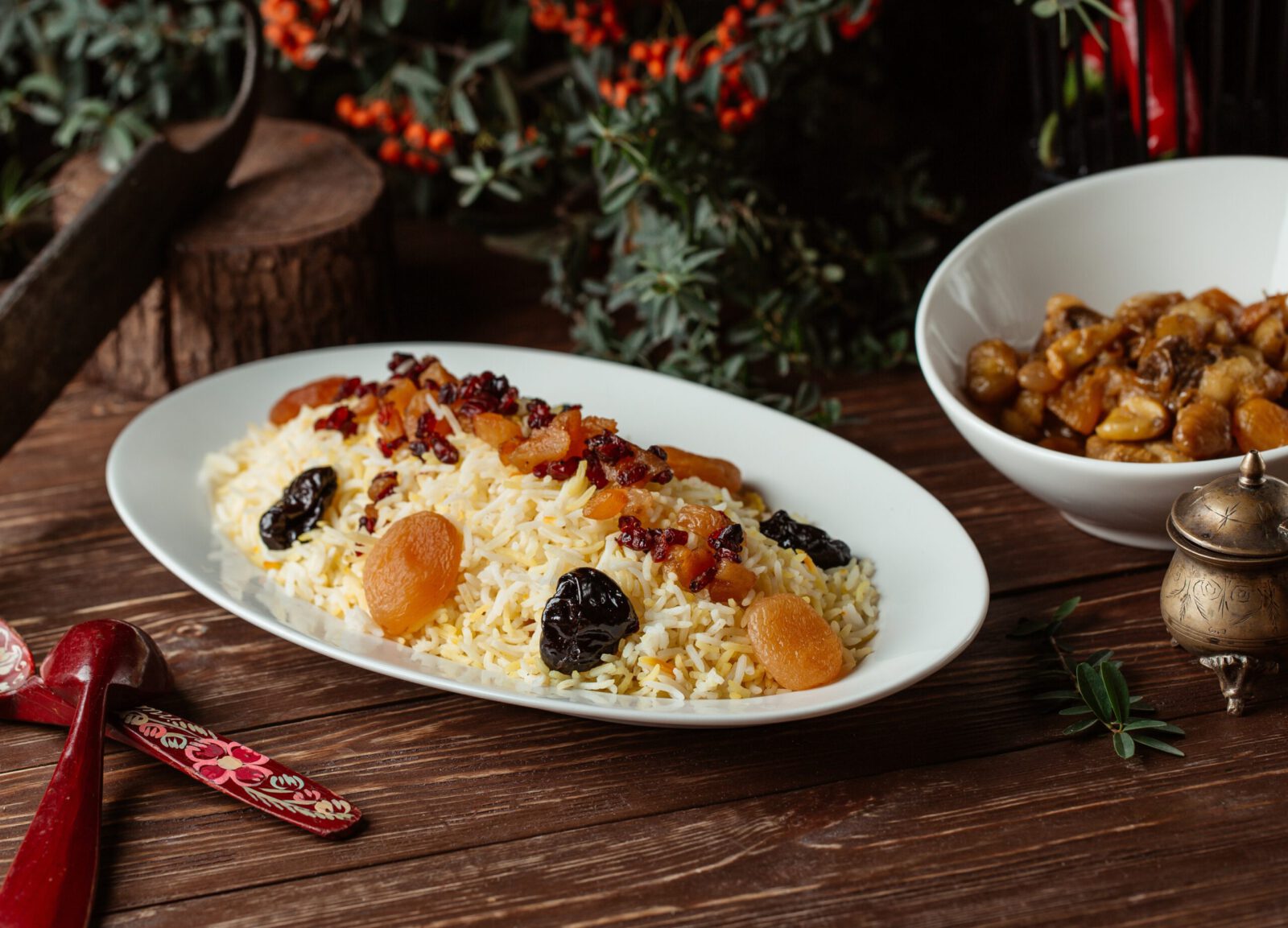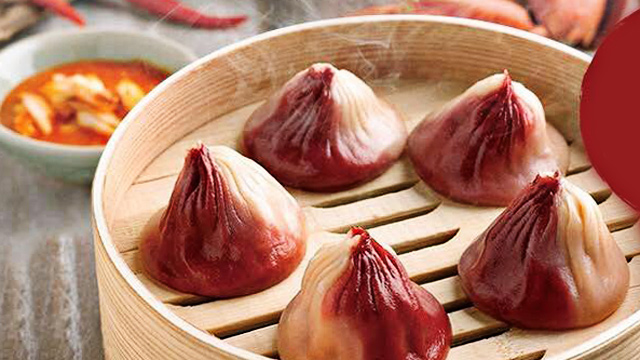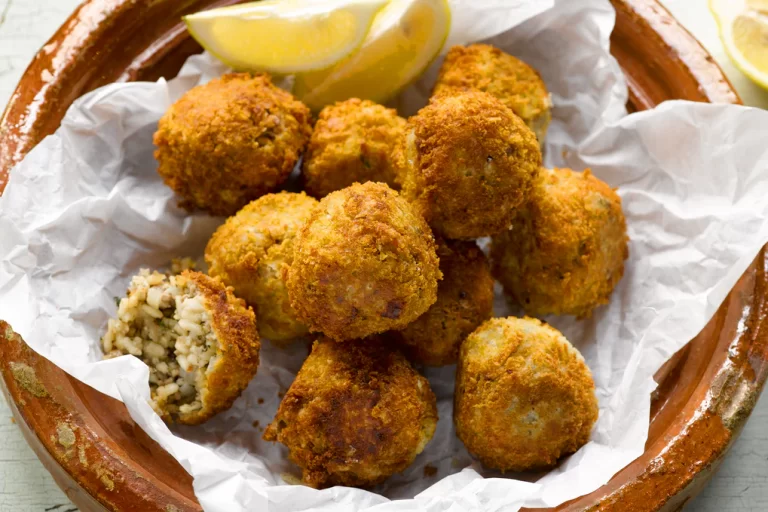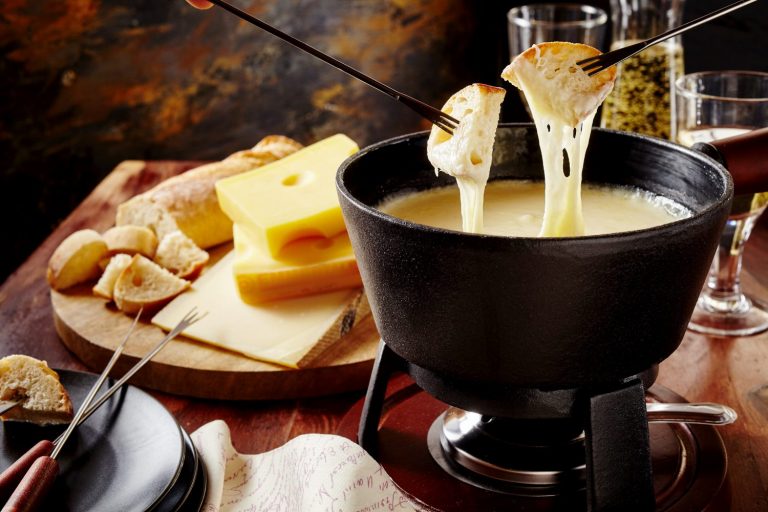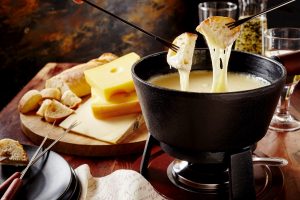In the diverse tapestry of global rice dishes, few can match the splendor and complexity of Azerbaijani plov. Far more than a simple rice pilaf, plov represents the pinnacle of Azerbaijani culinary artistry—a dish of celebration, hospitality, and cultural identity that has evolved over centuries of cultural exchange along the ancient Silk Road.
What distinguishes Azerbaijani plov is its meticulous preparation, harmonious layering of flavors, and the elevation of rice from mere staple to the centerpiece of a feast. The dish exemplifies the Azerbaijani approach to cooking: patient, methodical, and deeply respectful of both ingredients and tradition. With over 40 documented regional variations, plov demonstrates how a seemingly straightforward combination of rice, meat, and fruits can become an intricate expression of local tastes, available ingredients, and cultural influences.
This exploration delves into the rich history, precise techniques, cultural significance, and regional interpretations of this remarkable dish that serves as Azerbaijan’s gastronomic ambassador to the world.
Historical Roots: The Evolution of a Culinary Treasure
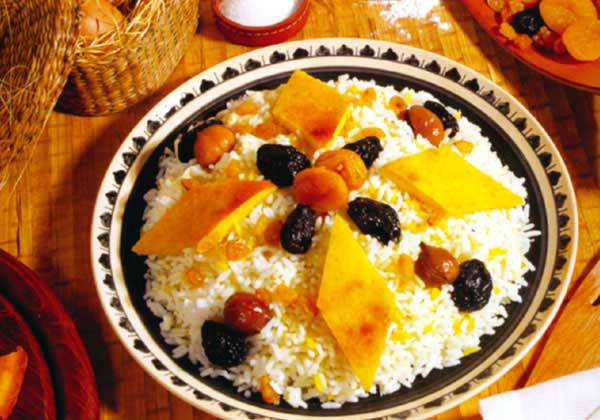
Ancient Origins and Influences
The history of plov in Azerbaijan intertwines with the broader story of rice cultivation and trade throughout Central Asia, Persia, and the Caucasus. While rice arrived in the region centuries ago, the development of plov as we know it today reflects multiple influences:
- Persian Culinary Legacy: The basic concept of rice pilaf likely originated in ancient Persia, with techniques and spice combinations traveling north into the Caucasus
- Silk Road Exchange: Trade routes brought ingredients like saffron, dried fruits, and nuts that became essential components of the dish
- Ottoman Influences: Turkish culinary traditions contributed cooking methods and flavor combinations
- Regional Adaptation: Local Azerbaijani ingredients and tastes transformed these influences into something distinctly their own
Historical documents indicate that by the medieval period, elaborate rice dishes resembling modern plov were already being served at the courts of local rulers throughout the region. The 16th-century culinary manuscripts mention festive rice preparations with meat, fruits, and elaborate presentations that bear clear resemblance to contemporary Azerbaijani plov traditions.
From Necessity to Artistry
While rice initially served as a practical staple, the evolution of plov demonstrates the transformation of necessity into culinary art:
- Cooking Innovation: The challenge of properly cooking rice in large quantities led to specialized techniques
- Social Stratification: Court cuisine elevated simple ingredients through elaborate preparation methods
- Ceremonial Significance: The dish gradually gained importance for celebrations and rituals
- Regional Pride: Different areas developed signature versions that became points of local identity
By the 19th century, plov had become firmly established as the preeminent celebratory dish across Azerbaijan, with families developing their own closely guarded recipes and techniques.
The Essential Elements of Traditional Plov
The Rice: Foundation of Excellence
The heart of any plov is the rice itself, which must be perfectly prepared:
- Preferred Varieties: Long-grain rice with low starch content is essential, traditionally varieties like Ganja rice, though Basmati or similar types are now commonly used
- Grain Preparation: Soaking (typically 1-4 hours) and careful washing to remove excess starch
- Perfect Texture: Each grain should be distinct and separate, neither clumpy nor mushy
- Layered Cooking: Partially cooked rice is often layered with other components to complete cooking
- Saffron Infusion: A portion of the rice is typically colored and flavored with saffron water
The Gazmag: The Prized Crust
Perhaps the most distinctive feature of Azerbaijani plov is the gazmag (or qazmaq)—a golden, crispy layer that forms at the bottom of the cooking pot:
- Creation Methods: Formed by cooking rice against the hot bottom of the pot, sometimes enhanced with egg-yogurt mixtures or thin lavash bread
- Cultural Value: Often considered the most desirable part of the dish, sometimes reserved for honored guests
- Textural Contrast: Provides a delightful crunch against the softness of the rice
- Serving Practices: Broken into pieces and served alongside the rice or placed atop the finished dish
The Meat Component: Hearty Foundations
Traditional plov typically includes meat prepared with great care:
- Preferred Proteins: Lamb is most traditional, though beef is also common
- Preparation Styles:
- Govurma: Meat sautéed with onions and sometimes fruits before incorporating with rice
- Whole Cuts: Larger pieces of meat cooked separately and served alongside or atop the rice
- Meatballs: Spiced ground meat formed into small balls and incorporated into the dish
- Cooking Methods: Often seared then slowly braised to ensure tenderness
The Aromatic Elements: Defining the Character
The distinctive bosjoko character of Azerbaijani plov comes from its carefully balanced aromatics:
- Essential Spices: Saffron, cardamom, cinnamon, cloves, bay leaf
- Dried Fruits: Apricots, prunes, cherries, barberries, raisins
- Nuts: Chestnuts, almonds, pistachios, walnuts
- Herbs: Mint, cilantro, dill, sometimes rose petals
- Aromatics: Onions, garlic, sometimes quince or other aromatic fruits
The Fat Component: Rich Foundations
The choice of cooking fat significantly impacts the flavor profile:
- Traditional Options: Sheep-tail fat (dümba) is most traditional, valued for its rich flavor
- Modern Alternatives: Clarified butter, vegetable oil, or combinations are now common
- Flavor Base: The fat is often infused with onions to create a flavorful foundation
- Finishing Touch: Additional melted butter may be drizzled over the finished dish
The Ritual of Preparation: A Labor of Love
Traditional Cooking Equipment
Proper equipment is considered essential for authentic plov:
- Gazancha/Qazan: Traditional heavy-bottomed cooking pot, historically copper
- Süzgəc: Special colander for draining the partially cooked rice
- Damkeş: Cloth used to seal the pot during the steaming phase
- Kapgir: Special slotted spoon for handling the rice without breaking grains
The Step-by-Step Process
Traditional preparation follows a meticulous sequence:
- Rice Preparation: Thorough washing and soaking to remove excess starch
- Meat Preparation: Typically sautéed with onions until golden and fragrant
- First Rice Cooking: Parboiling the rice in abundant salted water until partially done
- Saffron Infusion: Steeping saffron in hot water for coloring a portion of the rice
- Assembly: Layering the components in the cooking pot
- Final Cooking: Gentle steaming with a sealed lid to complete the cooking process
- Resting Period: Allowing the dish to rest before serving
- Presentation: Carefully unmolding onto a serving platter with attention to visual appeal
The Dam Process: The Key to Perfect Texture
The final steaming phase, known as “dam,” is perhaps the most crucial step:
- The pot is sealed tightly with a cloth or lid to trap steam
- Heat is reduced to very low, allowing the rice to finish cooking gently
- This process ensures distinct grains and proper absorption of flavors
- Timing must be precise to avoid overcooking
Regional Variations: The Many Faces of Plov
One of the most fascinating aspects of Azerbaijani plov is its regional diversity, with each area offering distinctive interpretations:
Şah Plov (King’s Plov)
The most ceremonial and elaborate variation:
- Preparation Method: Rice and filling encased in lavash bread to create a drum-shaped presentation
- Visual Appeal: When cut open at the table, the filling spills out dramatically
- Occasion: Reserved for the most special celebrations and honored guests
- Regional Association: Popular throughout Azerbaijan for ceremonial occasions
Səbzi Plov (Herb Plov)
A green-hued variation showcasing fresh herbs:
- Key Ingredients: Abundant dill, cilantro, mint, and other fresh herbs
- Preparation: Herbs are finely chopped and layered with the rice
- Flavor Profile: Fresh, aromatic, and vibrant
- Serving Context: Often prepared in spring when fresh herbs are plentiful
Şirin Plov (Sweet Plov)
A sweet-savory variation highlighting dried fruits:
- Distinctive Elements: Generous amounts of dried apricots, prunes, raisins, and chestnuts
- Preparation: Fruits often sautéed in butter with caramelized onions
- Regional Notes: Especially popular in Sheki and other northern regions
- Balance: The sweetness is balanced by savory elements and sometimes gentle spicing
Toyuq Plov (Chicken Plov)
A lighter variation using poultry instead of red meat:
- Preparation: Chicken pieces cooked separately then arranged with the rice
- Accompaniments: Often includes dried fruits and nuts like other plovs
- Regional Popularity: Common in Baku and eastern regions
- Seasonal Aspect: Sometimes preferred during warmer months as a lighter option
Balıq Plov (Fish Plov)
A coastal variation showcasing the Caspian Sea’s bounty:
- Fish Selection: Traditionally made with sturgeon or other prized Caspian fish
- Preparation: Fish is carefully cooked separately to prevent breaking
- Regional Association: Popular in coastal communities along the Caspian
- Distinctive Elements: Often includes more acidic elements to complement the fish
The Social and Cultural Significance of Plov
Celebratory Contexts
Plov’s place in Azerbaijani culture extends far beyond mere nutrition:
- Weddings: No traditional wedding is complete without plov, often served as the main dish
- Holidays: Central to celebrations for Nowruz (Persian New Year) and other important holidays
- Life Milestones: Served to mark births, graduations, and other significant life events
- Religious Observances: Prepared for special religious holidays and ceremonies
Symbolism and Meaning
The components of plov carry symbolic significance:
- Rice Abundance: Represents prosperity and fertility
- Saffron Color: Symbolizes happiness and joy
- Meat Portion: Signifies strength and sustenance
- Fruits and Nuts: Represent sweetness in life and natural bounty
- Gazmag (Crust): Sometimes seen as symbolizing the foundation of family unity
Hospitality Traditions
Plov plays a central role in Azerbaijani hospitality customs:
- Guest Honor: Serving plov indicates the highest respect for guests
- Communal Dining: Traditionally eaten from a shared platter, fostering connection
- Allocation Customs: Specific portions may be offered to different guests based on status
- Abundance Principle: Always made in generous quantities to ensure no one leaves hungry
Authentic Azerbaijani Plov Recipe
This recipe represents a traditional approach to preparing Shah Plov, one of the most impressive and festive variations:
Ingredients
Rice:
- 500g long-grain rice (Basmati or similar)
- 2 tablespoons salt (for boiling water)
- Large pinch of saffron threads
- 3 tablespoons hot water (for saffron)
- 100g clarified butter or ghee
Meat Filling:
- 500g lamb shoulder, cut into 2cm cubes
- 2 large onions, thinly sliced
- 3 tablespoons clarified butter or ghee
- 1 teaspoon ground cumin
- 1 teaspoon ground coriander
- 1/2 teaspoon ground black pepper
- Salt to taste
Fruit and Nut Mixture:
- 100g dried apricots, soaked and sliced
- 100g pitted prunes, soaked and halved
- 50g golden raisins, soaked
- 100g chestnuts, roasted and peeled (or substitute almonds)
- 2 tablespoons clarified butter
- 1 medium onion, finely sliced
- 1/4 teaspoon ground cardamom
- 1/4 teaspoon ground cinnamon
the Gazmag (Crust):
- 2 large thin lavash breads
- 2 tablespoons melted butter
- 1 egg, beaten (optional)
Garnish:
- Fresh pomegranate seeds
- Chopped fresh herbs (mint, cilantro)
Preparation Method
1. Prepare the Rice:
- Wash the rice thoroughly in cold water until the water runs clear
- Soak the washed rice in cold water with 1 tablespoon salt for 2 hours
- Steep saffron threads in 3 tablespoons hot water, set aside
2. Cook the Meat:
- Heat 2 tablespoons clarified butter in a heavy pot
- Add sliced onions and sauté until golden
- Add lamb pieces and brown on all sides
- Season with salt, pepper, cumin, and coriander
- Add enough water to barely cover the meat
- Simmer covered until meat is tender (about 1 hour)
- The liquid should reduce to a thick sauce; if too watery, uncover and reduce
3. Prepare the Fruit Mixture:
- Heat 2 tablespoons clarified butter in a separate pan
- Sauté the remaining sliced onion until translucent
- Add the dried fruits, chestnuts, cardamom, and cinnamon
- Gently stir for 5-7 minutes until fragrant
- Set aside
4. Parboil the Rice:
- Bring a large pot of water to a boil with remaining salt
- Drain the soaked rice and add to the boiling water
- Boil for 5-7 minutes until the rice is partially cooked (al dente)
- The grains should be soft on the outside but still firm in the center
- Drain in a colander
5. Prepare the Cooking Pot for Assembly:
- Select a heavy-bottomed pot (traditional qazan or Dutch oven)
- Generously butter the bottom and sides of the pot
- Line the bottom and sides with lavash bread, allowing it to hang over the edges
- Brush the lavash with beaten egg if using (this helps create a firmer crust)
6. Assemble the Plov:
- Place half of the parboiled rice in the pot, creating a flat layer
- Mix a portion of the rice (about 1/4) with the saffron water for color
- Spread the meat mixture over the rice layer
- Distribute the fruit and nut mixture over the meat
- Cover with the remaining white rice
- Top with the saffron-infused yellow rice for color contrast
- Poke 5-6 holes through the rice layers with the handle of a wooden spoon (to allow steam circulation)
- Fold the overhanging lavash over the rice
- Drizzle the remaining clarified butter over the top
7. Final Cooking (Dam):
- Cover the pot with a tight-fitting lid
- If the lid isn’t tight, place a clean kitchen towel between pot and lid to seal in steam
- Cook on low heat for about 45 minutes
- Check for doneness by inserting a spoon and tasting a few grains of rice
- Allow to rest, covered, for 10 minutes off heat
8. Presentation:
- Place a large serving platter upside down over the pot
- Carefully invert the pot to unmold the plov onto the platter
- The lavash crust (gazmag) should now be on top
- Garnish with pomegranate seeds and fresh herbs
- Break the crust into pieces at the table
Serving and Eating Traditions
Traditional Presentation
The visual presentation of plov is considered almost as important as its taste:
- Platter Arrangement: Typically served on a large communal platter
- Height Matters: Often mounded into a dome shape symbolizing abundance
- Color Contrast: The saffron-tinted yellow rice provides visual appeal against the white rice
- Garnishing: Fresh herbs, pomegranate seeds, or edible flowers for color
- Crust Presentation: The gazmag might be broken up and arranged around the rice or left intact for dramatic effect
Accompaniments
Traditional accompaniments enhance the plov experience:
- Fresh Herbs: Platters of mint, cilantro, basil, and tarragon for adding as desired
- Vegetables: Fresh tomatoes, cucumbers, and radishes
- Pickles: Various pickled vegetables, especially green tomatoes or cabbage
- Condiments: Sometimes served with garlic in yogurt (similar to tzatziki)
- Beverages: Black tea is the traditional drink served with plov
Eating Etiquette
Traditional plov consumption follows certain customs:
- Hand Eating: In the most traditional settings, plov might be eaten with the right hand
- Communal Sharing: Multiple diners eat from the same large platter, each taking from the section in front of them
- Rice First: Traditionally, one starts with the rice before enjoying the meat and fruits
- Gazmag Distribution: The crispy crust may be offered first to the guest of honor
Contemporary Adaptations and Global Influence
Modern Variations
While respecting tradition, contemporary Azerbaijani cooks have adapted plov:
- Health-Conscious Versions: Reduced fat content, more vegetables, brown rice substitutions
- Convenience Adaptations: Pressure cooker or rice cooker methods for faster preparation
- Fusion Approaches: Incorporating non-traditional ingredients while maintaining technique
- Dietary Accommodations: Vegetarian and vegan versions replacing meat with legumes or additional vegetables
Global Recognition
Azerbaijan’s national dish has gained international appreciation:
- Culinary Tourism: Plov experiences are highlighted in Azerbaijan’s tourism promotion
- Cultural Exchange: Featured in international food festivals and cultural events
- Diaspora Influence: Azerbaijani communities worldwide have introduced plov to their adopted countries
- Cookbook Presence: Increasingly included in international compilations of significant world dishes
Conclusion: The Enduring Legacy of Azerbaijani Plov
Azerbaijani plov stands as a testament to the power of culinary tradition to convey cultural identity, history, and values. Far more than just a rice dish, it embodies the Azerbaijani approach to hospitality, celebration, and community. The careful balance of flavors—savory, sweet, aromatic, and rich—mirrors the country’s position at the crossroads of cultures, where Persian, Turkish, Central Asian, and indigenous Caucasian influences blend into something distinctly Azerbaijani.
The meticulous preparation process, with its emphasis on technique and patience, reflects values that extend beyond cooking: attention to detail, respect for tradition, and the belief that some things cannot and should not be rushed. In a world of fast food and instant gratification, the enduring popularity of this labor-intensive dish speaks to the human appreciation for foods that carry meaning and connection.
Whether served at an elaborate wedding feast or a family gathering, plov continues to fulfill its centuries-old role as Azerbaijan’s culinary ambassador—bringing people together around a shared appreciation for this magnificent celebration of rice, transformed through skill and care into one of the world’s great dishes.












